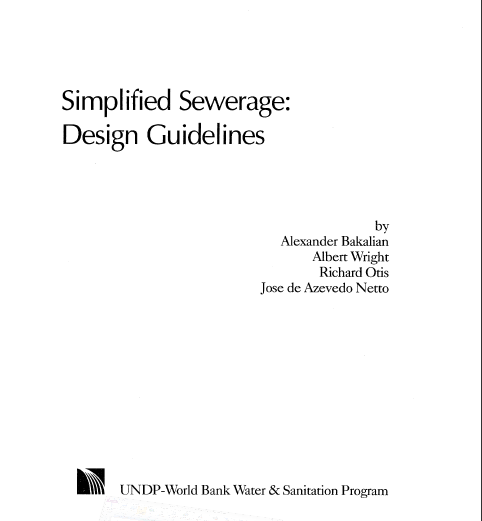Simplified sewerage: design guidelines
 |
informe May 1994 ; 29 páginas
Aut. Alexander Bakalian & Jose de Azevetto Netto & Richard Otis & Albert Wright
Ed. WSP - Washington World Bank - Washington
Formato descargable: PdF
Abstract:
This report presents guidelines for the design of simplified sewers based on experiences in Brazil. Simplified sewers operate as conventional sewers but with a number of modifications: the minimum diameter and the minimum cover are reduced, the slope is determined by using the tractive force concept rather than the minimum velocity concept, sewers are installed below pavements where possible, and many costly manholes are eliminated or replaced with less-expensive cleanouts. Experience with these systems has shown that cost savings of 20 percent to 50 percent have been achieved. Operation and maintenance requirements have been similar to conventional sewers. Simplified sewer systems were first implemented in cities in Sao Paulo State and Parana state in Brazil, and later applied in Bolivia and Colombia.
Palabras claves: |
aguas residuales (CI) (DT) (HP) (ope) , excreta (CI) (DT) (HP) (ope) , saneamiento (CI) (DT) (HP) (ope) , tecnologías de bajo costo (CI) (DT) (HP) (ope) |
Editores/Difusores: |
|
WSP
-
Water and Sanitation Program - Washington - Estados Unidos |
World Bank - Washington - Estados Unidos |
Si hay un enlace roto, estaremos encantados de recibir un mensaje: communication@pseau.org